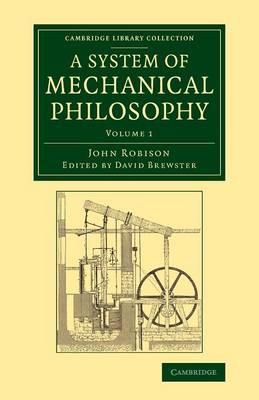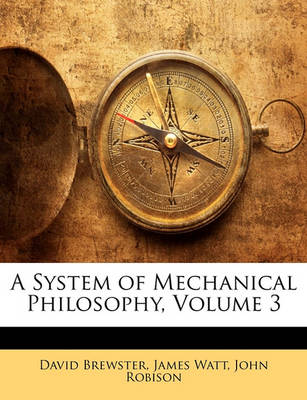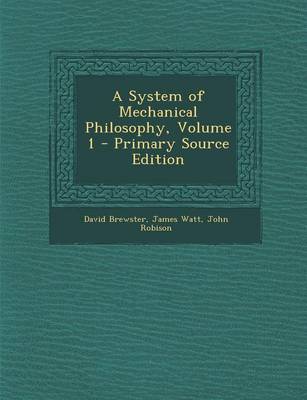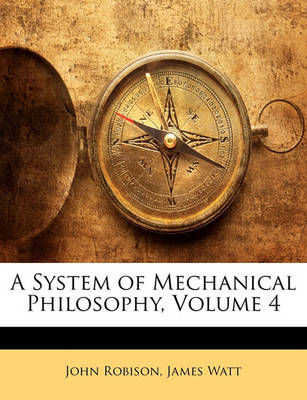Cambridge Library Collection - Technology
1 primary work • 6 total works
Volume 1
After a brief career at sea, during which he tested Harrison's chronometer for the Board of Longitude, John Robison (1739–1805) became lecturer in chemistry at the University of Glasgow. In 1774, having spent a period teaching mathematics in Russia, he returned to Scotland as professor of natural philosophy at Edinburgh. Despite his busy schedule, he contributed major articles on the sciences to the Encyclopaedia Britannica, giving an overview of contemporary scientific knowledge for the educated layperson. After his death, these and other pieces of his scientific writing were edited by his former pupil David Brewster (1781–1868) and were finally published in four volumes in 1822, with a separate volume of illustrative plates. This reissue incorporates those plates in the relevant volumes of text. Volume 1 contains articles on dynamics and on the construction of roofs, arches and bridges, as well as a previously unpublished manuscript on projectile motion.
After a brief career at sea, during which he tested Harrison's chronometer for the Board of Longitude, John Robison (1739-1805) became lecturer in chemistry at the University of Glasgow. In 1774, having spent a period teaching mathematics in Russia, he returned to Scotland as professor of natural philosophy at Edinburgh. Despite his busy schedule, he contributed major articles on the sciences to the Encyclopaedia Britannica, giving an overview of contemporary scientific knowledge for the educated layperson. After his death, these and other pieces of his scientific writing were edited by his former pupil David Brewster (1781-1868) and were finally published in four volumes in 1822, with a separate volume of illustrative plates. This reissue incorporates those plates in the relevant volumes of text. Volume 1 covers dynamics; Volume 2 mainly machinery, including the steam engine; Volume 3 astronomy and pneumatics; Volume 4 electricity, magnetism and sound.
A System of Mechanical Philosophy, Volume 3
by Sir David Brewster, James Watt, and John Robison
Published 10 February 2010
After a brief career at sea, during which he tested Harrison's chronometer for the Board of Longitude, John Robison (1739-1805) became lecturer in chemistry at the University of Glasgow. In 1774, having spent a period teaching mathematics in Russia, he returned to Scotland as professor of natural philosophy at Edinburgh. Despite his busy schedule, he contributed major articles on the sciences to the Encyclopaedia Britannica, giving an overview of contemporary scientific knowledge for the educated layperson. After his death, these and other pieces of his scientific writing were edited by his former pupil David Brewster (1781-1868) and were finally published in four volumes in 1822, with a separate volume of illustrative plates. This reissue incorporates those plates in the relevant volumes of text. Volume 3 reprints Robison's large treatise on astronomy, based on his university lectures, as well as his articles on telescopes and pneumatics.
System of Mechanical Philosophy, Volume 1
by Sir David Brewster, James Watt, and John Robison
Published 7 January 2010
After a brief career at sea, during which he tested Harrison's chronometer for the Board of Longitude, John Robison (1739-1805) became lecturer in chemistry at the University of Glasgow. In 1774, having spent a period teaching mathematics in Russia, he returned to Scotland as professor of natural philosophy at Edinburgh. Despite his busy schedule, he contributed major articles on the sciences to the Encyclopaedia Britannica, giving an overview of contemporary scientific knowledge for the educated layperson. After his death, these and other pieces of his scientific writing were edited by his former pupil David Brewster (1781-1868) and were finally published in four volumes in 1822, with a separate volume of illustrative plates. This reissue incorporates those plates in the relevant volumes of text. Volume 1 contains articles on dynamics and on the construction of roofs, arches and bridges, as well as a previously unpublished manuscript on projectile motion.
A System of Mechanical Philosophy, Volume 4
by James Watt and John Robison
Published 3 February 2010
After a brief career at sea, during which he tested Harrison's chronometer for the Board of Longitude, John Robison (1739-1805) became lecturer in chemistry at the University of Glasgow. In 1774, having spent a period teaching mathematics in Russia, he returned to Scotland as professor of natural philosophy at Edinburgh. Despite his busy schedule, he contributed major articles on the sciences to the Encyclopaedia Britannica, giving an overview of contemporary scientific knowledge for the educated layperson. After his death, these and other pieces of his scientific writing were edited by his former pupil David Brewster (1781-1868) and were finally published in four volumes in 1822, with a separate volume of illustrative plates. This reissue incorporates those plates in the relevant volumes of text. Volume 4 contains a variety of Robison's encyclopaedia articles: on electricity and on magnetism, various pieces on the physics of sound and music, and assorted others.
A System of Mechanical Philosophy, Volume 2
by James Watt and John Robison
Published 4 February 2010
After a brief career at sea, during which he tested Harrison's chronometer for the Board of Longitude, John Robison (1739-1805) became lecturer in chemistry at the University of Glasgow. In 1774, having spent a period teaching mathematics in Russia, he returned to Scotland as professor of natural philosophy at Edinburgh. Despite his busy schedule, he contributed major articles on the sciences to the Encyclopaedia Britannica, giving an overview of contemporary scientific knowledge for the educated layperson. After his death, these and other pieces of his scientific writing were edited by his former pupil David Brewster (1781-1868) and were finally published in four volumes in 1822, with a separate volume of illustrative plates. This reissue incorporates those plates in the relevant volumes of text. Volume 2 contains Robison's articles on the steam engine (revised and expanded by his friend James Watt), on other machinery, and on fluid flows.





